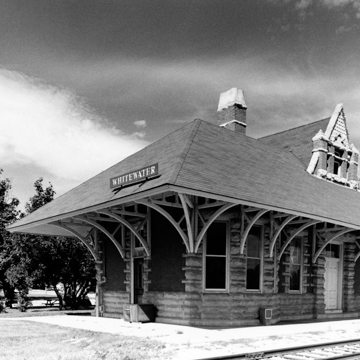Jennings designed this robust passenger depot sometime between 1885 and 1893, during his stint as architect for the Chicago, Milwaukee, and St. Paul Railway Company (reincorporated and renamed in 1927 to include “and Pacific Railroad Company”). Its design somewhat echoes those by H. H. Richardson. The foundation of buff-colored stone is rusticated and rock-faced to convey a sense of weight. Above the sill line, rugged quoins define the corners, windows, and doors, contrasting with the color and texture of the red brick. Slender wooden braces support the eaves. The hipped roof, with its wide overhangs, reasserts the sense of mass. Cross-gables with bartizans of rough-cut stone, trefoils, and patterned brick adorn the roof. The rugged weightiness, limited ornamentation, and polychromy show Richardson’s influence.
You are here
Passenger Depot, Chicago, Milwaukee, and St. Paul Railway Company
If SAH Archipedia has been useful to you, please consider supporting it.
SAH Archipedia tells the story of the United States through its buildings, landscapes, and cities. This freely available resource empowers the public with authoritative knowledge that deepens their understanding and appreciation of the built environment. But the Society of Architectural Historians, which created SAH Archipedia with University of Virginia Press, needs your support to maintain the high-caliber research, writing, photography, cartography, editing, design, and programming that make SAH Archipedia a trusted online resource available to all who value the history of place, heritage tourism, and learning.


